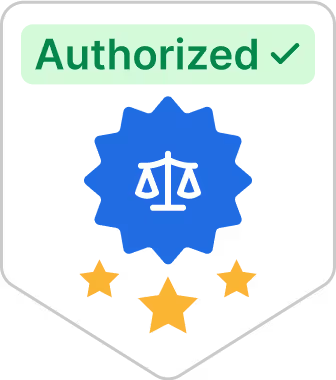What conditions qualify for disability?

Studies show that a 20-year-old worker has a 25% change of becoming disabled before reaching retirement age.
Before diving in, it will be helpful to answer: what is SSDI? Social Security Disability Insurance, or SSDI, is a government program that pays monthly benefits to individuals who can’t work due to their disability. This award amount varies on a case-by-case basis, but most people receive between $800 and $1,800 per month. The average award amount in 2021 is $1,277, and the maximum is $3,148.
There are requirements you must meet if you want to apply for SSDI benefits. You must be over 18 years old to apply, and prove that you worked a certain number of years in a tax-paying job prior to becoming disabled. This number of years depends on how old you are at the time of your application. Once you have established these basic requirements, you’ll also have to prove that your impairment meets the disability qualifications.
Who decides if you are disabled?
Your doctors and other medical professionals determine your diagnosis, but only the Social Security Administration (SSA) officials reviewing your application can decide if your condition makes you eligible for disability insurance.
You will need to provide the following medical information when you prepare your application:
- Names, addresses, and phone numbers of doctors who treated you
- Names, addresses, and phone numbers of any caseworkers you met with
- A list of hospitals and clinics you visited, and dates of visits
- Names and dosages of any prescription drugs you take
- Medical records from doctors, hospitals, and caseworkers that you already have
- Laboratory test results
SSA officials will use this information to decide if your condition qualifies as a disability. They will ask your doctors for their medical opinion on your ability to do basic work activities like walking, standing and sitting for extended periods of time, driving, lifting and carrying items, remembering instructions, and more.
The Blue book
The SSA keeps a list of the conditions that qualify for disability insurance, called the Listing of Impairments. This list by the SSA is known as the Blue Book, and it can be found in its entirety on the SSA website. The Blue Break breaks down the list of qualifying conditions into 14 different categories, including:
- Musculoskeletal System
- Special Senses and Speech
- Respiratory Disorders
- Cardiovascular System
- Digestive System
- Genitourinary Disorders
- Hematological Disorders
- Skin Disorders
- Endocrine Disorders
- Congenital Disorders that Affect Multiple Body Systems
- Neurological Disorders
- Mental Disorders
- Cancer (Malignant Neoplastic Diseases)
- Immune System Disorders
In each category, you will discover several different conditions, as well as descriptions of each condition as defined by the SSA. This is important to note because the SSA’s description of a condition may not exactly match your doctor’s description, or your experience. There are both physical and mental conditions listed in the Blue Book.
Evidence
You will need to provide medical evidence to prove that you have an impairing condition, and that your impairment is serious enough to keep you from making a living. The medical evidence you will need to provide is different for physical and mental conditions.
For physical conditions, the most important evidence you and your doctor will need to provide to the SSA is laboratory test results. Often, you will be asked to provide things like X-rays, MRIs, exercise test results, and chemical examinations.
Mental conditions, on the other hand, are more challenging to determine through laboratory tests. Instead, you will likely have to provide the results of psychological evaluations. To have your claim approved, you must prove that your condition severely limits you in aspects of memory, social interaction, maintaining focus, and other cognitive functions. Mental conditions generally have less precise definitions, so there may be more room to argue your case.
Does your condition have to be in The Blue book?
If your disabling condition is listed in the Blue Book and it meets the SSA’s description of disability, you will likely be approved for disability insurance. However, if you have a condition that is not listed in the Blue Book that impairs your ability to work, you may still be able to qualify for Social Security disability benefits.
The Blue Book does not contain every single condition that could impair someone’s ability to work. If your specific impairment is not listed in the Blue Book, but it is severe and well-documented by your doctors, you could qualify for disability insurance under what is called a medical-vocational allowance.
A medical-vocational allowance lets people with impairing conditions that are not typically considered disabilities (that is, conditions not listed in the Blue Book) to receive Social Security disability benefits. You just have to prove that your condition is severe enough to prevent you from making a living. Here are a few examples of conditions not listed in the Blue Book that could be approved:
- Migraine headaches
- Chronic pain
- Carpal tunnel syndrome
- Fibromyalgia
What conditions are most likely to qualify?
Regardless of how severe you believe your condition to be, it is highly suggested to keep the progress of your condition well-documented by your doctor. This is your best chance to qualify for medical benefits in a timely manner.
That said, there are various conditions that are more commonly approved than others. They include:
- Disorders of the Spine
- COPD (Chronic Obstructive Pulmonary Disease)
- Asthma
- Chronic Heart Failure
- Affective Disorders, such as Bipolar Disorder
These are just some examples of the many conditions adults commonly list when applying for disability insurance. Parents can also apply for disability insurance on behalf of their children. The most commonly cited conditions for disabled children include:
- Autism and Other Developmental Disorders
- ADHD (Attention Deficit Hyperactivity Disorder)
What conditions are least likely to qualify?
What conditions qualify for disability insurance depends on whether it impairs your ability to make a living. Even if your condition is serious, if you cannot obtain verification from a healthcare professional that it prevents you from working full-time, you will not be able to qualify for disability insurance.
Also, if you have a fully impairing condition, but it is not likely to last a full year or to lead to your death, you will most likely not be able to qualify for disability insurance. The SSA does not provide long term disability benefits for partial or temporary disabilities.
If you do have a severely impairing condition, but you are an adult who has either never worked or has not worked a certain number of years, you will not be eligible for SSDI. This number of years is based on your age at the time you became disabled.
Can you fast-track your disability claim?
The unfortunate truth is that applying for disability insurance can be very long and frustrating. When asking the question, how long does it take to get disability, it’s important to remember that most people have to wait 3 to 5 months to hear anything back from the SSA. Even if you do receive an approval letter, it takes even longer to receive a determination of how much your monthly SSDI benefit amount will be. Once your monthly SSDI benefit is decided, you may still have to wait several more months before you actually start receiving the money.
Until recently, every application for disability insurance was treated exactly the same. Someone with carpal tunnel syndrome, for example, would experience the same lengthy review process as someone with a much more severe condition, like late-stage cancer.
However, in 2008, the SSA began a Compassionate Allowances program that allows people with the most severe disabilities to essentially skip ahead in line. Instead of waiting months, people with a condition covered in the Compassionate Allowances program may be able to start receiving benefits in a matter of weeks. Here are some of the 200+ conditions covered in the Compassionate Allowances program:
- Adult Non-Hodgkin Lymphoma
- Inoperable Breast Cancer
- Child non-Hodgkin Lymphoma
- Early Onset Alzheimer’s Disease
- Infantile Farber’s Disease
- Pearson Syndrome
- Wolman Disease
How to apply for disability insurance
You can apply online for disability insurance on the SSA website. If you do not have internet access, you can apply by calling the SSA’s toll-free number (1-800-772-1213) and speaking to a representative. If you prefer, you can fill out an application in person by visiting your local SSA office (though they ask that you call ahead to schedule an appointment).
To learn more about social security-related advice, check out all our resources. You can find assistance on all sorts of Social Security issues that you may be struggling to deal with.
Having a Social Security card is key to many important government programs like SSDI. These cards never expire, but if you happen to lose yours, it can be difficult to replace. We can help you throughout the entire process.
Simplify the process and apply for a social security card online with GOV+.
Sources:
- Disability Benefits Help. Compassionate Allowances. https://www.disability-benefits-help.org/compassionate-allowances
- Disability Secrets. How Much in Social Security Disability Benefits Can You Get? https://www.disabilitysecrets.com/how-much-in-ssd.html#:~:text=It%20is%20not%20based%20on,your%20payment%20may%20be%20reduced.
- All Law. The Social Security Blue Book – Listing of Impairments. https://www.alllaw.com/articles/nolo/disability/the-social-security-blue-book.html
- Social Security Administration. Disability Benefits. https://www.ssa.gov/pubs/EN-05-10029.pdf
- Social Security Administration. Listing of Impairments – Adult Listings (Part A).























